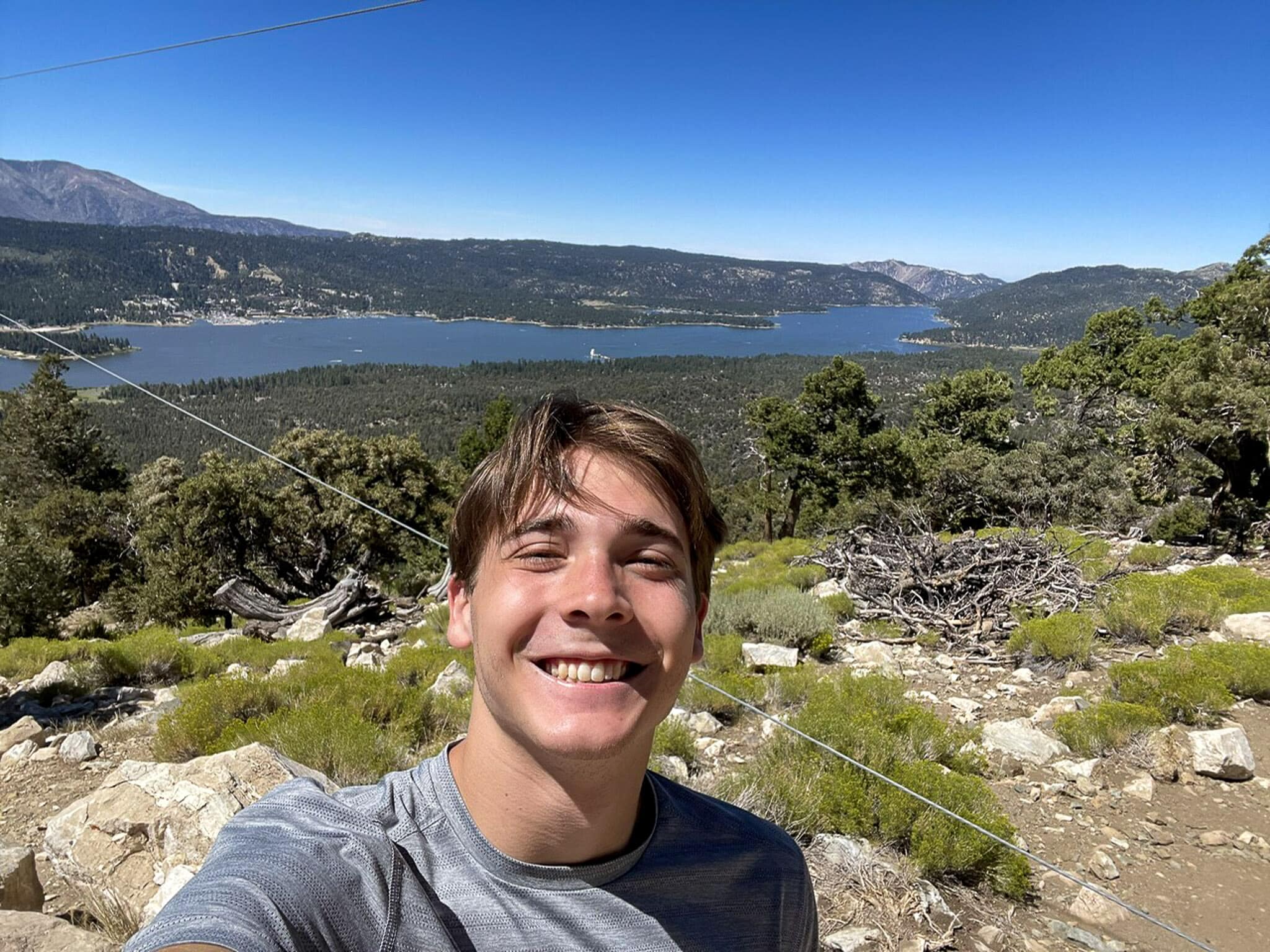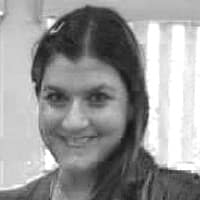NSF Research Experience Sparks Embry-Riddle Undergrad to Study Solar Flares at Big Bear Observatory

Embry-Riddle Aeronautical University student Logan Schierholz was thrilled when he found out he was selected for a paid research internship studying space weather at the New Jersey Institute of Technology.
But as he made plans to spend 10 weeks in Newark, New Jersey, he got another surprise. He was chosen by NJIT as one of just two students to conduct solar astrophysics research at California’s Big Bear Solar Observatory, home to one of the world’s largest solar telescopes.

Schierholz was one of just two students chosen by the New Jersey Institute of Technology to spend their National Science Foundation Research Experience for Undergraduates at the solar observatory. (Photo: Embry-Riddle/Logan Schierholz)As part of a National Science Foundation Research Experience for Undergraduates (REU), Schierholz spent nine weeks this summer conducting solar flare research with mentor Dr. Vasyl Yurchyshyn at the observatory. Fellows receive a stipend, housing, meals and travel assistance
“We were about an hour’s drive up into the San Bernardino mountains and I was living in a cabin in the woods with one other research student, so it was a big change for me," said Schierholz, a senior Aerospace Engineering student from Marlborough, Connecticut.
The observatory is located on a remote peninsula on the shores of Big Bear Lake, in an area known for its clear skies. It houses the Goode Solar Telescope, which features an advanced adaptive optics system that provides high-resolution images of the Sun to study its magnetic fields and flares.
Solar flares are powerful radiation bursts on the Sun that can impact satellites, radio communications, electric power grids and navigation signals.
“Using magnetic field data, I was able to construct a statistical model to identify when, where and how a solar flare occurs on the sun,” said Schierholz, who later presented his research at a symposium at NJIT.
Schierholz’s work at Big Bear Solar builds on the space weather research he’s done for the past year at the Space Physics Research Lab with Dr. Kshitija Deshpande, associate professor of Engineering Physics at Embry-Riddle’s Daytona Beach Campus.
Deshpande’s research focuses on investigating disturbances in the ionosphere, which is a region of the upper atmosphere, that can disrupt a wide range of communications, including satellite signals. These disturbances, known as ionospheric scintillations, can prevent a GPS receiver from locking on to the signal and calculating an accurate position.
The recipient of a National Science Foundation (NSF) Faculty Early Career Development Program (CAREER) award, Deshpande is also examining ways that big data and machine learning can improve space weather prediction.

The solar observatory is located on a small, remote island on Big Bear Lake in the San Bernardino Mountains. (Photo: Embry-Riddle/ Logan Schierholz)Schierholz has worked this past year with Deshpande on the AIRWaveS (Atmosphere-Ionosphere Responses to Wave Signals) project, which examines the impact of ground-level impulsive disturbances on Global Navigation Satellite System (GNSS) signals.
“Logan is a very brilliant and sincere student and deserved this opportunity,” said Deshpande. “These REU programs expose the students to cutting-edge research nationwide, plus gives them opportunity to interact with and get motivated from other top students across the country.”
Schierholz said he grew both personally and professionally from his REU experience, strengthening both his research and technical skills. He sharpened his Python programming, which he is currently applying to a machine learning project analyzing GPS scintillation data that he is working on with Deshpande.
“I’m analyzing satellite scintillations in the ionosphere due to ground explosions, rocket launches, thunderstorms, geomagnetic storms and hurricanes,” said Schierholz.
He has also gained hands-on experience working with small satellites as a member of the Embry-Riddle Orbital Research Association (ERORA). He attended the Small Satellite Conference in Salt Lake City in August and is part of ERORA’s engineering team for the Tardigrade BioExploration Reproduction Research Satellite (tBEARR), a cube satellite that aims to study the effects of space radiation.
Schierholz, who plans to pursue his master’s degree in Systems Engineering at Embry-Riddle next fall, said the REU experience supports his goal to eventually work as an engineer in the commercial space industry.
“If you are designing and building something for space, you need to know how certain factors, like heat and radiation, will impact them,” he said.

 Melanie Stawicki Azam
Melanie Stawicki Azam